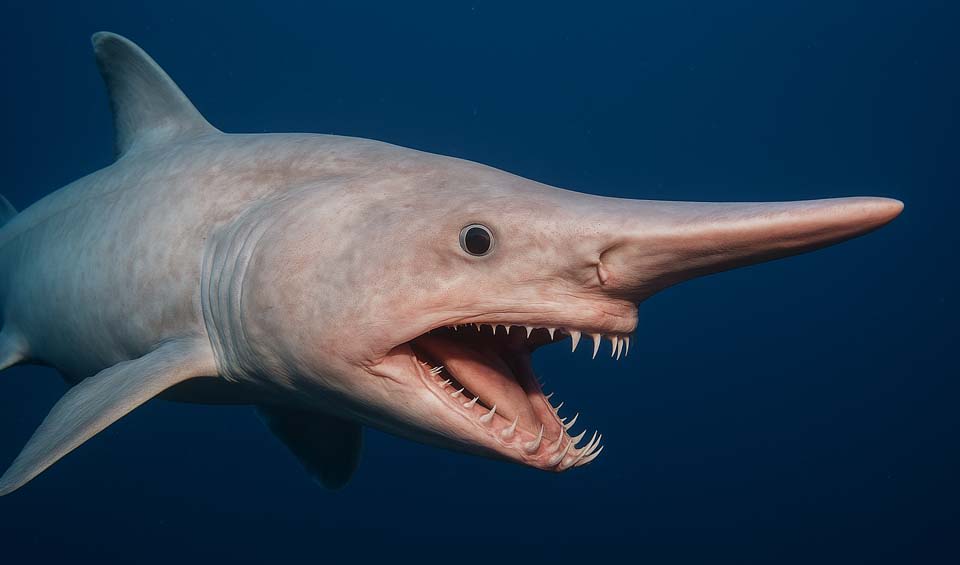The most distinctive feature of the goblin shark is its long, flattened snout, which protrudes far beyond its mouth. This snout is covered in sensory organs that help the shark detect the electrical fields produced by its prey, which is crucial for hunting in the deep, dark waters where it lives. The snout, combined with the shark’s pale pinkish-gray color, gives it a ghostly, almost eerie appearance, which is why it has been nicknamed the “goblin” shark.
Another fascinating characteristic of the goblin shark is its jaws. Unlike most sharks, which have jaws that are firmly attached to their skulls, the goblin shark has highly protrusible jaws. This means that when it attacks its prey, its jaws can shoot forward, extending out of its mouth to grab its target. This ability is incredibly useful for catching fast-moving prey in the deep sea, where food can be scarce, and every meal counts. When not in use, the jaws are retracted under the snout, making the shark look a bit more streamlined.
The body of the goblin shark is soft and flabby, which is unusual for sharks. This is because it lives in deep water, usually between 200 and 1,200 meters (660 to 3,900 feet) below the surface, where the pressure is high and the environment is cold and dark. The soft body helps the shark conserve energy in this challenging environment. Its fins are also relatively small, which means the goblin shark is not a fast swimmer. Instead, it likely relies on ambush tactics to capture prey, slowly drifting through the water until it gets close enough to launch a sudden attack.
Distribution
 Atlantic Ocean
Atlantic Ocean Indian ocean
Indian ocean Pacific ocean
Pacific ocean Gulf of Mexico
Gulf of Mexico Australia
Australia Belize
Belize Brazil
Brazil Colombia
Colombia France
France French Guiana
French Guiana Guinea
Guinea Guyana
Guyana India
India Japan
Japan Morocco
Morocco Mozambique
Mozambique New Zealand
New Zealand Portugal
Portugal Senegal
Senegal South Africa
South Africa Spain
Spain Suriname
Suriname Taiwan
Taiwan United States
United StatesAnything we've missed?
Help us improve this page by suggesting edits. Glory never dies!
Suggest an editGet to know me
Terrestrial / Aquatic
Altricial / Precocial
Polygamous / Monogamous
Dimorphic (size) / Monomorphic
Active: Diurnal / Nocturnal
Social behavior: Solitary / Pack / Herd
Diet: Carnivore / Herbivore / Omnivore / Piscivorous / Insectivore
Migratory: Yes / No
Domesticated: Yes / No
Dangerous: Yes / No




